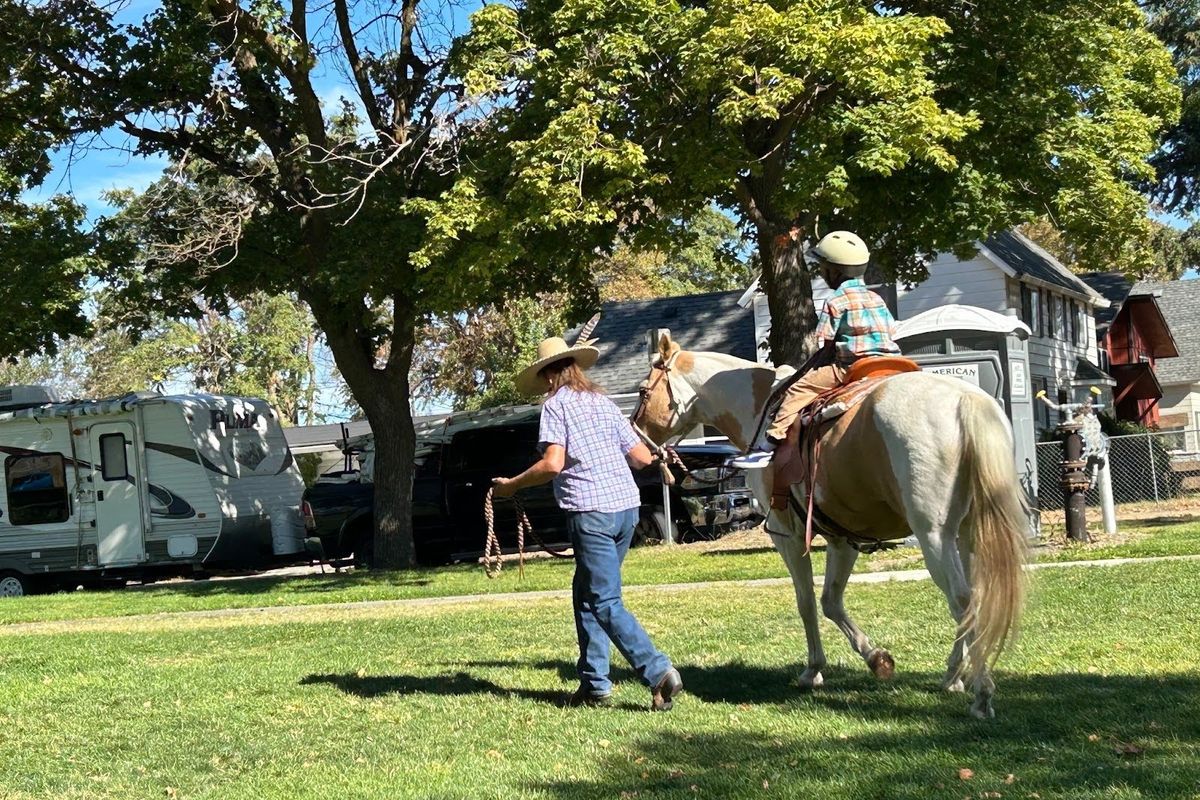Sandra Freeman and Julie Williamson-Serquinia remember when Liberty Park was the fulcrum of Spokane’s Black community in the 1960s. Nostalgia takes Williamson-Serquinia back to the era of the Delfonics, when “La La Means I Love You” played on the airwaves. She and her friends would meet at Liberty Park regularly to hang out, a familiar gathering place that felt like a comfortable pair of shoes for so many back then.
“We just showed up, you know, we’d go down there,” Williamson-Serquinia said. “I couldn’t swim, but I’d get in the pool, and you’d meet your friends there and kind of congregate. The airmen would be down there, and we’d be looking at them. It was just the spot to be. Kind of like Riverfront Park is now. You’d just walk around, stroll around, socialize.”
Enter the I-90 freeway in the 1960s. It cut through the heart of the East Central community like a knife. Things have never been the same.
“Well, it basically split East Central. Came right through the middle of it,” Williamson-Serquinia said. “That actually happened after we lived there. Yeah. We lived on the other side of the freeway on a street called Grant, kind of over by where the Goodwill is now, before the freeway came in. But then after that we lived on that same side, and the freeway just took out that whole middle. It did, in fact, cut the community in half.”
Freeman left Spokane when she was 18 years old. She returned seven years ago.
“I was just so excited to come back to Spokane, to my roots,” Freeman said. “I felt like this is the place that I needed to be, to tell the story. There are just so many more new people here, younger; if we can bring the community together to share the rich Black culture that was here in the past, (we can) bring it all together.”
Freeman’s parents were Francis and Clarence Freeman, and they worked on the Liberty Park Improvement Group in the 1960s. In the aftermath of the freeway, the Black community was scattered. Liberty Park was a shell of its former self. Williamson-Serquinia remembers her mom talking about how they protested the construction of the freeway. Freeman recalls how her parents rallied to revive Liberty Park to a place of beauty. Their efforts brought back a children’s wading pool, a changing area, and landscaping.
“They raised between $40,000 and $50,0000 to improve Liberty Park, along with the Parks Department,” Freeman said. “They also worked with a local artist named Keith Oka. And so, with that money, they got sidewalks installed, because it was just dirt. They wanted it to be a nice place.”
Knowing the strong sense of community that Liberty Park provided, Williamson-Serquinia and Freeman teamed up to plan an event that occurred on Sept. 28: “NW Trilogy: Black Farmers, Cowboys, and Soldiers.” Often, stories about the Great Migration detail journeys of Black families from South to North. The pair wanted to tell the stories of Black Americans right here in our region; pioneers of the Pacific Northwest. With the help of Marsha Rooney, photos of Black homesteaders and pioneers in our region were provided by the MAC museum for an exhibit.
One of those photos was of Calvin and Lunar King from Desmet, Idaho. They were relatives of Freeman. She recalls going to King Valley to visit them as a young child.
“It dawned on me that it was unique because there weren’t any other Black people down there,” Freeman said. “Now as an adult, I really recognize how unique this was because they came in 1910 to homestead in the King Valley; there was nobody around. Yeah. This was some land that they got through a lottery.
“They lived in Spokane for a few years and then moved. It took them two days to get from Spokane to Desmet, Idaho, which now takes me like an hour and a half to go by car.”
They did this, shared Freeman, with seven kids in tow.
The NW planning team wanted this occasion to be family centered.
“We tried to have an all-encompassing event, so it would attract different people from different generations,” Freeman said.
There was a DJ, horse rides, the Buffalo Soldiers motorcycle group, line dancing, and a vocal performance by Alethea Dumas. Themed as a western affair, RJs So Southern Barbeque and Catering offered chili and cornbread for purchase. The Spokane Branch of the NAACP, the Carl Maxey Center, The Alliance, Fresh Soul, SWAG, and the Jasmin Group helped finance the event. Local artist Bob Lloyd also collaborated with the planning team to create a poster that was sold as memorabilia to help financially support this initiative. The Spokane Branch of the NAACP and The Links Inc., Spokane Chapter partnered to encourage voting in the Nov. 5 election.
In June, “Our Stories: Black Families in Spokane” successfully brought the community together to celebrate and resurrect history that paved the way through generations. Williamson-Serquinia has a vision.
“The long-term plan is for a museum honoring African American history, past and present, in Spokane and environs,” Williamson-Serquinia said. In the meantime, she is at work, spearheading events like “NW Trilogy” and “Our Stories” in collaboration with community partners. She shared that the idea for NW was planted by Natasha Hill, in a conversation they had earlier this summer.
She shared, “If folks would like to share info about their family’s history,” contact ourstories789@gmail.com.
Stay tuned in for more opportunities to learn more about Spokane’s Black history.
